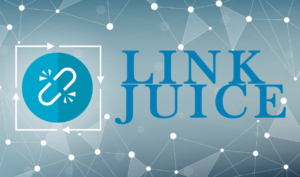Professional deck builders are experts at providing high-quality, aesthetically pleasing outdoor spaces. They are also skilled at troubleshooting and addressing issues that may arise during construction.
Ask potential contractors for referrals from previous clients and examine their portfolios to determine if their work matches your preferences. Request proof of insurance coverage and ask about their building process. Click the https://jrcsi.com/ to learn more.

Professional builders are familiar with the process of obtaining permits and working with inspectors to ensure that your deck meets safety and building codes. This saves you the time and hassle of navigating the permit application process independently, and helps to eliminate the risk of costly errors or delays in construction.
They can provide you with accurate cost estimates to help you plan your budget. Additionally, they work efficiently to ensure that your project is completed within the estimated timeline. This allows you to enjoy your deck as soon as possible. Moreover, they can also recommend creative solutions that add functionality and aesthetic appeal to your outdoor space.
Unlike DIYers, professional contractors understand the intricacies of building a deck and have access to the necessary tools and materials. Their knowledge of local soil conditions and weather patterns prevents structural problems in the future. In addition, they are aware of the required load-bearing capacity and the appropriate beam sizes for a stable structure. They can also help you choose a suitable wood for your deck to improve its durability and longevity.
Besides improving the functionality of your deck, professional builders can add custom features to make it stand out from the crowd. For instance, they can create an outdoor dining area or integrate fire pits for a cozy ambiance. They can even recommend custom railings and unique inlays to complement your home’s style.
Experience
If you hire a professional deck builder with years of experience, you can expect to have the construction process completed without any major problems. They’ve been in the industry for a long time, so they’ve refined their processes to minimize mistakes and make projects as efficient as possible. This is a huge benefit that a homeowner or an inexperienced builder just can’t offer.
Ask contractors about their work history and request to see a portfolio of past projects. When reviewing their portfolio, look at the overall aesthetics of their designs. Do they tend to lean toward more traditional or modern styles? It’s important that a contractor’s design sensibility aligns with your own. Changing preferences at a later date will cost money, complicate the project and potentially delay its completion.
It’s also important to understand the type of materials a contractor prefers to use. While there are many different options, some builders have a particular preference for certain materials that they know will hold up well over time. Asking contractors what types of decks they’ve built before will help you determine if their preferred materials are right for your needs.
Another aspect to consider is how quickly and accurately a contractor responds to calls, emails or other communication. It’s a bad sign if they take several days to answer a simple question or don’t reply at all. A reputable contractor should aim to respond to communications within the same business day. They should also be able to provide you with a realistic timeline for your deck’s construction. If they can’t, you may want to choose a different contractor.
Licenses
Many states require contractors to be licensed in order to operate legally. This allows the local building department to enforce standards and protect homeowners from inexperienced builders who may not do quality work or follow safety regulations. When choosing a contractor, ask to see proof of licensing and insurance. Also, check for reviews on websites like Yelp or Thumbtack to learn about the builder’s experience.
A licensed deck builder will have the skills and expertise to create a deck that is both beautiful and functional. They will use premium materials and precise construction techniques to ensure the deck is safe and sturdy. Moreover, they will comply with all required building codes and regulations to prevent future problems. This is a huge benefit over DIY approaches or hiring an unlicensed contractor.
Professional deck builders also offer labor warranties on their work. This provides peace of mind that any mistakes or issues with the construction will be addressed at no additional cost. It is important to choose a deck builder with both a workers’ compensation and general liability insurance policy to avoid any potential conflicts down the road.
Lastly, a reputable deck builder will have an established business. This means they should have a website, physical address, phone number, and email address. Additionally, they will display a logo on their trucks and work uniforms to establish brand recognition among local communities.
Choosing the right contractor can be an overwhelming task, but it is essential to find someone who is both experienced and dependable. By requesting references, reviewing their licenses and insurance policies, and discussing the construction process, you can be confident that you’ll get a high-quality deck at an affordable price.
Insurance
When you have a contractor who is insured and licensed, you can rest easy knowing that you are protected in the event of an accident. If you choose a builder who does not carry liability insurance and workers’ compensation coverage, you could be held responsible for any damages that occur while they are working on your deck.
If you are unsure about the insurance that a builder offers, ask them for proof of coverage. They should be able to provide you with the necessary documents in a timely manner. You should also inquire about any potential risks that may be associated with the project. For instance, if they are going to be digging, you should contact 811 in advance to find out the location of any buried utility lines.
Another important question to ask is how long the company has been in business. This will give you an idea of how experienced they are and whether or not they have the proper credentials to work on your deck. You should also find out if they have any previous clients that you can contact for references.
In addition, it is a good idea to find out what kind of warranties they offer and how the warranty process works. Some contractors will offer a warranty on materials while others will only offer a labor warranty. You should always get a written contract that includes the warranty information so that you have the necessary documentation in case something goes wrong.
Finally, it is a good idea to find a contractor who is familiar with dealing with insurance companies in the event of a claim. This will make the entire process smoother and faster for you.
Communication
Deck building is an intricate process that requires a good working relationship between client and contractor. Poor communication can result in misunderstandings and misinterpretations. The best way to avoid this is to do some research on prospective contractors before hiring them. This can include inspecting references, checking out evaluations and discussing rates.
When interviewing potential deck builders, pay attention to how well they communicate their ideas and suggestions. Ask them questions about their pricing structure, what materials they use and how their design process works. They should be able to answer these questions clearly and confidently. In addition, a professional should be able to explain the contract details of their work, including permitting and inspections.
A quality deck builder should be able to provide you with a detailed estimate of the cost of your project. They should also be able to show you some examples of their previous projects. Then, you can decide if they are the right fit for your project.
Lastly, look for contractors who are open to listening to your feedback. If a contractor ignores your comments or doesn’t seem to want to hear your opinions, they are not the best option for you.
In video games, deck-building systems have been around for a while and are used in a variety of genres. For example, the Kingdom Hearts franchise and Metal Gear Acid both incorporate deck-based combat into their games. Despite this, it has taken some time for the trend to make its way into real-world construction. However, many companies have begun to offer these services. Among them is Archadeck, which has documented processes that help it meet clients’ needs. These processes also support the company’s national reputation for high-quality outdoor structures.







